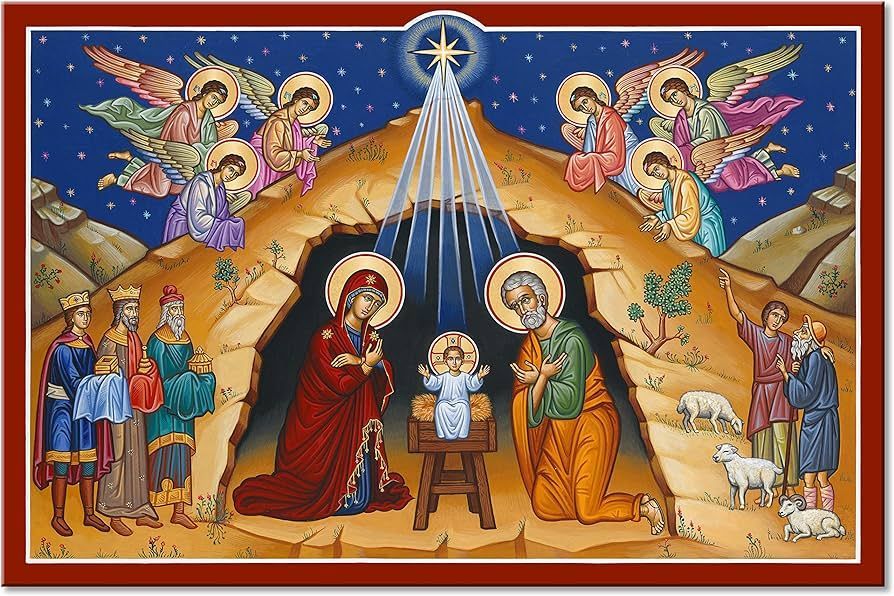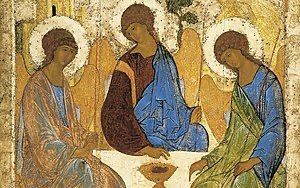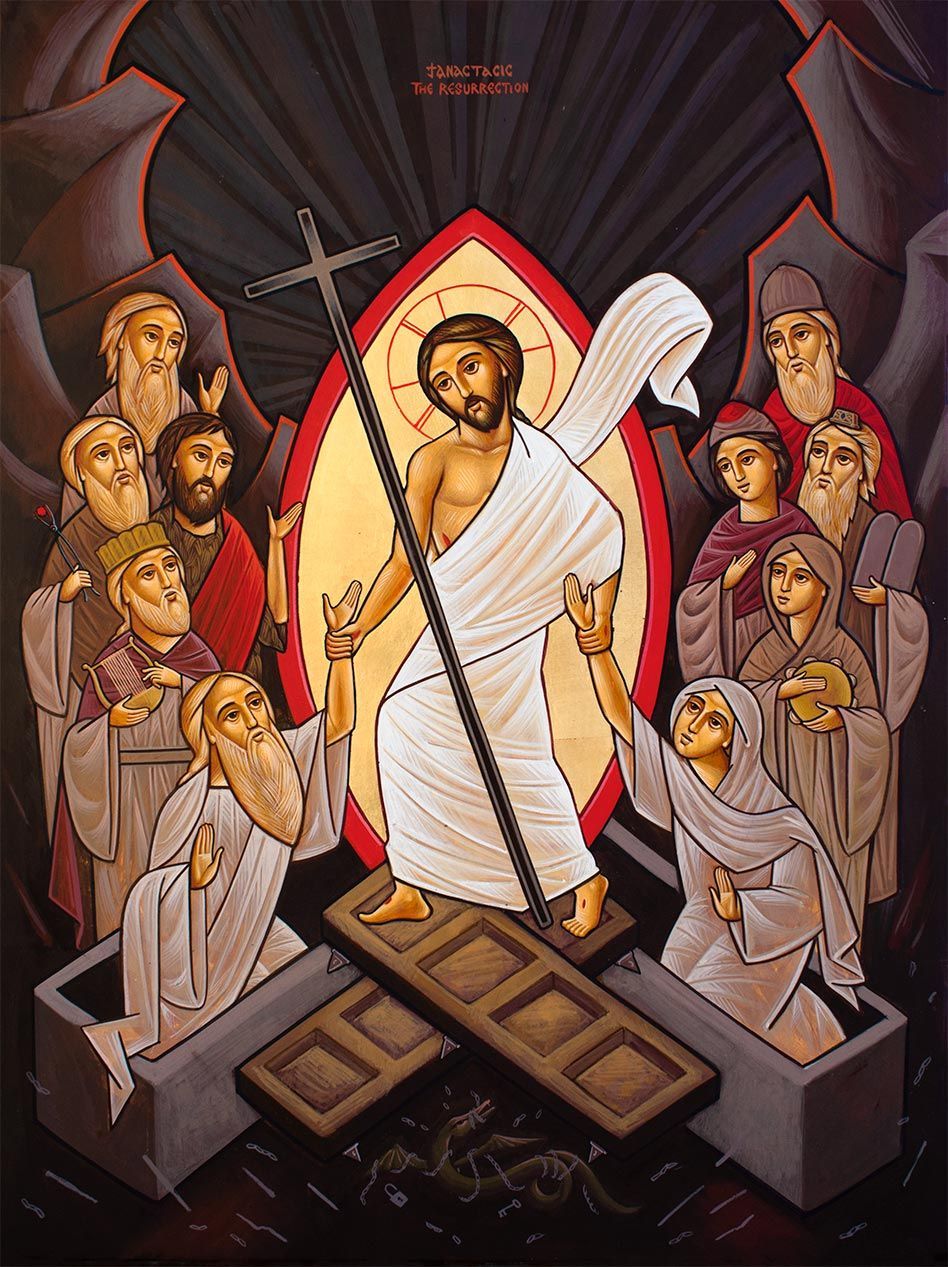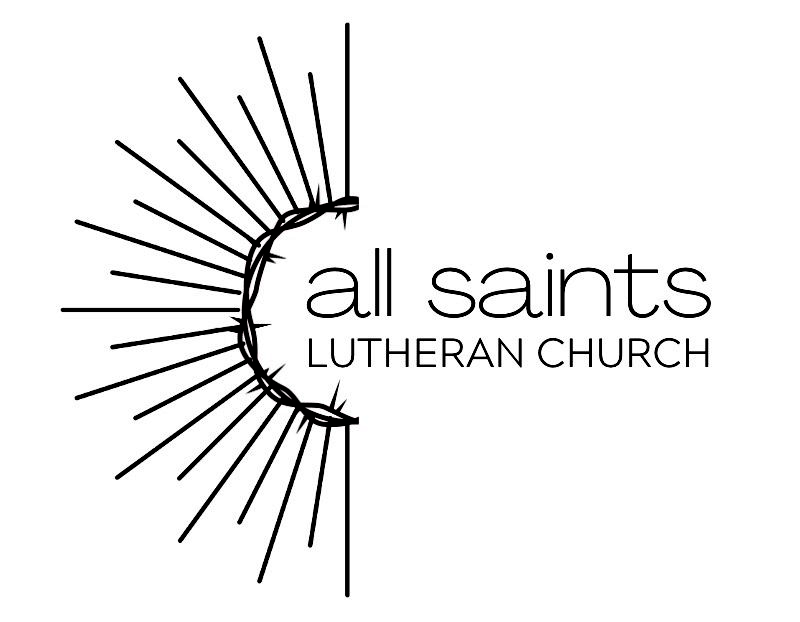Second Sunday of Easter, C, April 27, 2025
Some of you may know
that I recently had sinus surgery.
I had several issues
that obstructed my airway,
making it harder for me to breathe,
and exacerbated by my seasonal allergies
to almost everything that grows outside.
When the surgery was over,
and while I was still in recovery,
the doctor came out to tell Jennifer
how the procedure had gone.
He talked about the three procedures
she had known about ahead of time
and how they had been very successful.
But then he asked her
when I had broken my nose.
We had been married
almost 18 ½ years at that point,
and she knew it had not happened
during our time together.
Further,
she was sure that a broken nose
was something that might have come up
sometime in those 18 ½ years
and she had never heard about it.
The doctor said the injury
had been quite significant,
similar to a crushing injury,
and he had had to reconstruct my airway.
Once I regained consciousness,
she asked me about it.
I also had no idea.
I have absolutely zero memory
of any trauma to the head
that would have resulted in a crushing injury
to the inside of my skull.
My mother passed in 2013,
my grandmother in 2021,
and my childhood pediatrician
has long since closed up his practice
and destroyed all his records.
My aunt couldn’t remember
any significant trauma to my face or head
that could have caused such an issue.
A couple of months later,
I heard a story of a man
whose older brother
had suffered a head injury at birth
from the use of forceps,
which had deformed the infant’s skull
causing a traumatic brain injury.
Then it all clicked.
My mother was 17,
I was her first child,
two week late,
and it was a difficult birth.
She avoided a c-section
because the physician
had used forceps to deliver me.
It seems like the only reasonable explanation
for evidence of an unknown crushing injury
was likely due to the use of forceps
some 43 years ago.
Scars are like that sometimes;
they lie buried
deep in our bones,
deeper that we can see or perceive,
affecting us in ways we have taken for granted,
understood as normal,
just the way it’s always been,
until someone more acquainted with “normal”
comes along and says
‘this is what breathing is supposed to feel like’
and you have to question all you’ve ever known.
Our gospel reading
gives us the story of Thomas,
the disciple
and would-be Apostle.
Thomas was one of the 12.
He was with Jesus,
heard his teaching,
witnessed his miracles.
When the other disciples
try to dissuade Jesus from returning to Judea
after the death of Lazarus,
Thomas pipes up confidently,
“Let us also go
that we may die with him.”
When Jesus gives his farewell teaching
after washing the disciples’ feet,
promising that they all knew the way
to where he was going,
it is Thomas
who seems to say what everyone was thinking,
“Lord, we do not know where you are going.
How can we know the way?”
After the Day of Pentecost,
as the Apostles fan out from Jerusalem
and establish communities of believers
across the known world,
the Apostle Thomas
is said to have traveled to India
where he is credited
with the founding of the Indian Orthodox Church
before he was martyred
and his remains brought by his followers
to Edessa.
And yet,
despite all of his bravery,
fidelity
and martyrdom,
he is often called Doubting Thomas.
Today,
a Doubting Thomas
is a euphemism
for a person thought to be overly skeptical,
an unbeliever.
But I think this legacy
of Thomas the Dubious
is unfair.
The other disciples
experienced Jesus’ miraculous appearance
behind their locked door,
and Jesus showed them his hands and side.
They had an experience
and they had proof.
They could take believing this
for granted.
But all Thomas had
was their word.
And that wasn’t enough for Thomas.
Thomas knew
this wasn’t normal.
Without the same experience
and the same proof,
Thomas couldn’t wrap his mind
or his heart
around such an unbelievable possibility.
Thomas,
like the others,
had witnessed the crucifixion.
He had seen the beatings,
he had seen Jesus’ mangled face
and heard his final, strangled words.
He had seen Jesus die.
He had watched blood and water
gush from his speared side.
And Thomas had walked that Roman road
up to Jerusalem,
had seen it lined with crosses
and littered with corpses.
Thomas knew,
as a victim of empire,
as a witness to imperial terror
in the name of what Rome called ‘peace,’
that this was normal.
After all he had witnessed,
after all he knew to be true,
he needed some proof.
Thomas couldn’t base his faith
on the unbelievable claims
of someone else’s experience.
He was going to have to see it for himself.
He could not accept
a reality
that did not include the cross.
Each of us is certainly
all too familiar
with the same sort of grief,
pain,
trauma,
that Thomas knew.
It lives deep in our bones
like a crushing injury
we have accepted as normal,
usual,
routine.
We have been up close and personal
with death,
with Sheol,
Hades,
what some call Hell.
We have witnessed the mortality
of those we have loved,
and we are staring down the barrel of our own.
Faith in resurrection
as some sort of exemption,
some sort of erasure of all our grief,
pain,
and trauma
is certainly unbelievable,
even offensive.
Belief in some ancient mystery
or in some future rescue
is little comfort
to those accustomed to the cold, dark normal
of Hell.
But that is exactly
where Jesus met Thomas.
Eight days later,
Jesus appears to Thomas
and shows him the scars.
He shows him the nail holes
in his hands and feet.
He shows him his side.
I think we can assume
that there were thorn marks on his face,
patches missing from his beard,
and stripes on his back.
And the very second
that Thomas could see for himself
that this is the same Jesus
he’d seen brutalized and killed,
that all the trauma that had marked his soul
had marked his God as well,
he fell on his face in wonder and worship.
This is the good news for us.
We have a God
who is far more acquainted
with what ‘normal’ really is.
We have a God who knows
what breathing is supposed to feel like.
We have a God
who has descended into our grief, pain, and trauma
and has repaired the crushing injury
we didn’t even know we had.
Thomas’ disbelief
is not a cautionary tale
about the supremacy of faith over doubt.
Thomas’ disbelief
is an invitation to explore
all the crushing blows we have absorbed
as though they were normal;
an opportunity to discover
the resurrection as a reorientation to a new normal
that refuses to accept imperial terror as normal,
the propaganda of state violence as truth,
or personal grief, trauma, or pain
as too private to be shared.
Thomas didn’t doubt.
Thomas just didn’t know what a breath of fresh air
was supposed to feel like.
Happy are those who have not seen
and yet come to believe.
But I think
happier still are those
whose scars were so deep
they didn’t even know they couldn’t breathe
until the Holy Spirit addressed those scars
and fill their lungs
with the breath of life.
Amen.









